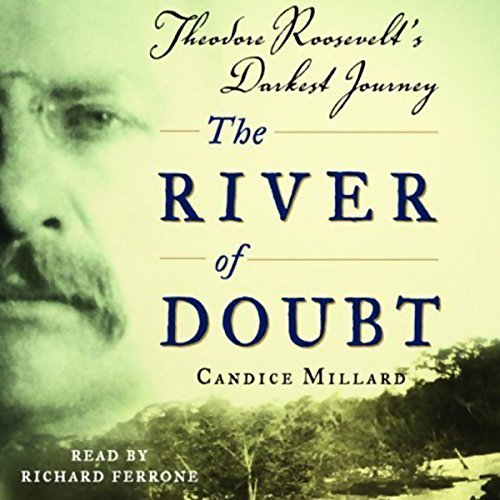The River of Doubt: Theodore Roosevelt's Darkest Journey

Physical Copy:
Audiobook:
By: Candace Miller
Rating: B+
I picked this book up to scratch that adventure itch. I feel like every young boy was fascinated by the Amazon at some point in their childhood. Endless rainforests, the second longest river in the world, quicksand, piranha, jaguars, caiman crocodiles, anacondas. The Amazon is teeming with danger and adventure. Every young boy's dream.
This book chronicles one of the most perilous and little-known expeditions in the life of Theodore Roosevelt, the 26th President of the United States. The journey took place in 1913-1914, after Roosevelt's defeat in the 1912 presidential election.
The narrative begins with Roosevelt's decision to embark on an expedition to explore an uncharted tributary of the Amazon River in Brazil. The river, initially named the "Rio da Dúvida" (River of Doubt) due to its unknown and treacherous nature, now bears the name Rio Roosevelt in honor of this expedition. Roosevelt was driven by his insatiable thirst for adventure and his desire to maintain a sense of purpose after his political setback.
The expedition party was a mix of American adventurers, Brazilian guides, and naturalists, including Roosevelt's son, Kermit, who played a crucial role as the leader's right-hand man. The team faced numerous challenges from the outset, including treacherous terrain, blistering heat, and swarming insects. They had to navigate through dense, uncharted rainforest, often resorting to hacking their way through with machetes.
As they ventured deeper into the heart of the Amazon, the hardships intensified. The river itself proved to be a formidable adversary, filled with dangerous rapids, hidden obstacles, and deadly creatures. The team's canoes were frequently battered and destroyed, and the men faced the constant threat of drowning.
The harsh conditions took a toll on the health of the expedition members. They suffered from malnutrition, tropical diseases, and injuries sustained in the brutal environment. Roosevelt, already in his 50s and plagued by past injuries, was particularly vulnerable. His indomitable spirit and determination, however, served as a source of inspiration and motivation for the beleaguered party.
As the journey wore on, tensions ran high within the group. The combination of physical exhaustion, the constant threat of danger, and the sheer isolation of their surroundings strained the teamwork of the men. Leadership decisions were often disputed, and morale was frequently tested.
Tragedy struck the expedition when one of its members, Father Zahm, fell ill and died. The loss was a sobering reminder of the unforgiving nature of the Amazonian wilderness and the precariousness of their situation.
The climax of the journey came when Roosevelt's life hung in the balance. Suffering from a severe leg infection, he became delirious with fever, and his condition rapidly deteriorated. With limited medical supplies and no means of communication with the outside world, the situation grew increasingly desperate. It was only through the combined efforts and ingenuity of the team that Roosevelt's life was saved.
Ultimately, after months of harrowing challenges, the expedition emerged from the depths of the Amazon, having successfully charted the River of Doubt. The surviving members returned to civilization forever changed by the experience. Roosevelt, though physically weakened, emerged with a newfound sense of humility and a deeper appreciation for the fragility of human existence in the face of nature's relentless power.
"The River of Doubt" is a gripping account of courage, resilience, and the human spirit's ability to persevere in the most unforgiving of circumstances. It paints a vivid portrait of Theodore Roosevelt, not only as a statesman and a leader but also as an indomitable adventurer willing to face the darkest unknowns of the natural world. Millard's narrative skillfully combines historical accuracy with the dramatic tension of a survival epic, making this a must-read for any adventurer.
